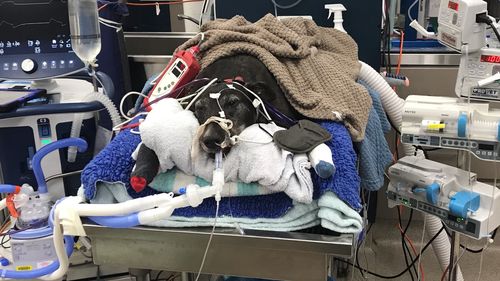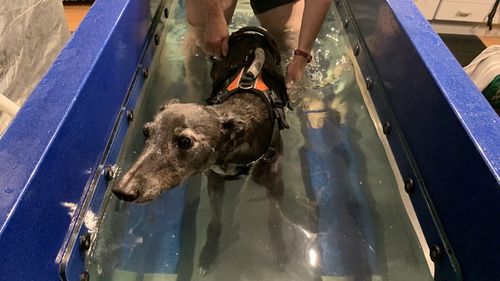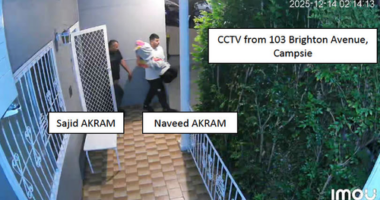Share this @internewscast.com
It was love at first sight when Yvette Colomb spotted Elsa on a greyhound adoption site.
Originally a racing dog, Elsa was on the brink of euthanasia until Colomb stepped in, saving her and granting her a renewed lease on life, only for her to be tragically poisoned a few years afterward.
It was 2020 and they were on a property about an hour north of Sydney when Elsa suddenly started to vomit.

Colomb immediately put Elsa in the back of the car and raced to Sydney, where her daughter took Elsa straight to the emergency vet.
“I remember I looked at her and it was the last time I looked at her before she was quite disabled,” Colomb told 9news.com.au.
By the time Elsa arrived at the vet, she’d vomited again, suffered a seizure and had to be put on life support.
That’s when the vet called Colomb and revealed her dog had been poisoned.
Elsa had accidentally ingested sodium fluoroacetate poison baits, better known as 1080.
The poison is commonly deployed throughout Australia to control populations of foxes, rabbits, wild dogs, and feral cats by lacing food items that are then left for these animals to consume.

Derived from a naturally occurring compound found in multiple Australian plants, some Australian animals have developed a tolerance to 1080.
Dogs may also ingest these baits and be poisoned, causing frenzied running, uncontrollable vomiting, howling, confusion, coma and even death.
Just a few milligrams of 1080 can be lethal to most dogs and there’s no antidote, though vet treatment can aid a dog’s survival.
“The vet said, ‘very few animals survive it and it’s very unlikely that Elsa will survive,'” Colomb said.
Although she didn’t have pet insurance, Colomb begged the vet to do anything to save her dog â and he did.

Miraculously, Elsa pulled through.
She spent almost two weeks at the emergency vet and needed additional rehabilitation, resulting in a $20,000 bill.
Despite surviving the 1080 poisoning, Elsa was left permanently disabled. 
“When we brought her home, it was almost like having an enormous newborn baby,” Colomb said.
“She was totally bedridden and it was around-the-clock care for her … it took her months to learn to walk again.”
The care for Elsa was costly—requiring hydrotherapy and a specialized diet for several months post-poisoning—but like many Australians, Colomb expressed she would go to great lengths for her beloved dog.
Elsa walked with a wobble and had mobility issues for the rest of her life, but her health really started to decline in 2025.

She died at home in Colomb’s arms in June.
“She was like lying flat against me, and she had her head against my chest, and I just patted every very gently,” Colomb said.
Devastated by the loss, she took comfort from the 10,000 animal lovers who had followed Elsa’s story in her Facebook group.
Now she’s campaigning to outlaw the baits that almost killed Elsa five years ago, left her disabled and cost the family thousands in vet care.
Access to 1080 is highly restricted in Australia and its use is regulated by the Australian Pesticides and Veterinary Medicines Authority (APVMA), state and territory government agencies and local land management authorities.
Use of the poison varies across the country and baits are tailored to the target species and the local ecosystem.

“It’s a horrible way to die and I understand that foxes need to be taken care of, but I think we need to do it in a responsible and humane way,” Colomb said.
“I don’t think we can just drop poison into our environment and hope for the best.”
She started a Change.org petition that has already attracted more than 3000 signatures and plans to petition Federal Parliament to reconsider the use of 1080 across the country.
Colomb’s only regret is not taking action and campaigning for a ban on 1080 sooner.
“Why did I wait so long? I need to make Elsa’s memory count.”













